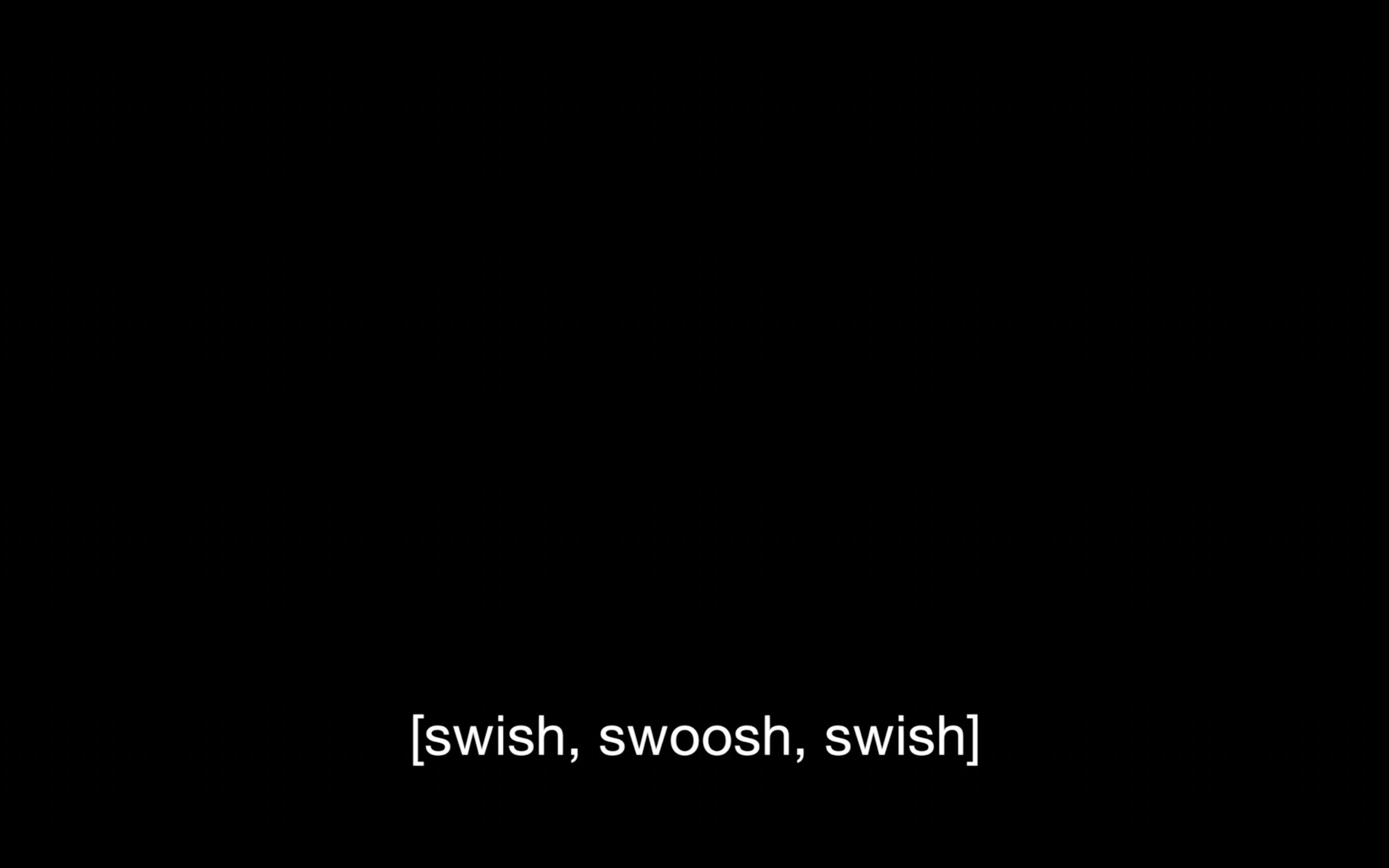
Dance is a highly physical art form that often includes numerous senses. Dancers traditionally respond to a beat or melody through hearing; their sense of touch will be used for intricate movements against the floor and in relation to fellow performers. But it is usually the sight of dance that is put centre stage for the audience. Carolyn Lazard, a New York and Philadelphia-based artist and writer, dynamically challenges the way that dance is experienced in a new exhibition at Nottingham Contemporary.
In their collaborative work Long Take, Lazard almost removes the sense of sight and presents a creative dance piece through a sound installation, complete with recorded reading of a dance score, sounds of the performer’s movements and breath, and an audio description on a black screen. The piece confronts the hierarchy often given to the senses within the arts, with sight typically valued as the most important. Long Take calls for a different approach to rigid ideas that impinge accessibility, expanding the limits of what dance in a public space can be.
“European culture and philosophy has largely privileged sight as our primary means of producing knowledge,” said Lazard. “It’s an epistemic violence that narrows the infinite possibilities for how we make meaning in life.”
The exhibition takes a complete approach to its message. As part of the installation, Lazard has altered four of Nottingham Contemporary’s benches to create a more welcoming and comfortable experience for visitors with different access needs. The heights of the benches have been altered, and cushions and backrests have been added. Their practice is not only a powerful call to explore accessibility and inclusion within the work itself, it also takes a practical approach to reframing the oftentimes exclusive world of art galleries and institutions.
In 2019 they wrote Accessibility in the Arts: A Promise and a Practice. It is a clear yet richly researched guide for small-scale nonprofits to become more open to the public they serve. It covers topics from how best to list access information to different accommodations that can be made to support visitors with varying needs. The straightforward guide delves into matters such as childcare, content warnings, and touch tours for people who are blind or vision impaired.
“Museums are a colonial project, and therefore inherently ableist,” said “Long Take” co-curator Olivia Aherne, who has worked with Rosa Tyhurst on the exhibition. “They create, perpetuate and reinforce forms of hegemonic power. Within that, productivity and competency are of utmost importance.” The curator added that Lazard’s guide was persuasive that greater accessibility can be achieved regardless of available resources. “It’s about assessing priorities and redirecting resources, both in terms of what you value and privilege but also more practically what you budget for.”
Many of the suggestions in the Accessibility in the Arts guide are seemingly simple for galleries to take on, but surprisingly few spaces have. Lazard’s collaborative approach to art making exposes the power that can be found in working together to find innovative solutions.
“Long Take is about the relational and how people provide care and access for each other always, before, after, and beyond what one might call the state or the economy,” they said, adding that they invited dancer and writer Jerron Herman and writer and artist Joselia Rebekah Hughes to make this work. “We are all in an extended community of artists who are interested in questions of care and access aesthetics…We danced together, we listened together, we recorded together, and we wrote together.”
An urgent issue within public care systems is the racism and inequality that lie at the heart of their structures. Lazard’s 2019 work Pain Scale confronted the minimization of Black pain that is inherent within the United States’ medical services. The piece depicts a row of brown faces, created in the image of the emoji-like expressions that are presented to patients in hospitals to communicate the level of pain they are feeling. Except in Lazard’s work, all the faces are smiling. The only option for those picking from this scale, is happy and pain free.
The work speaks to disturbing findings that have been uncovered within the US care system. A 2016 study found that 50 percent of US medical students believed Black people to have thicker skin or less sensitive nerve endings than white people. A broader meta-analysis of two decades of studies found that Black patients were 22 percent less likely than white patients to receive pain medication when requested. These deeply rooted, racist misconceptions can make a world of difference to how a patient is treated by the medical profession, if indeed they are deemed to need treatment at all.
We need to see “the end of the world as it is,” Lazard said, when asked what must change in the United States to address this systemic racism within the care system. Their work is a rallying cry for equality in care and access, but also a creative and often practical exploration of how this might happen.
In Long Take, the work embodies its message. It doesn’t just tell its audience why vision-favored works can be problematic, it shows them another, highly enriching way of experiencing a popular art form. Importantly, the work shows that accessibility within art does not have to mean a reduction of complexity. “In its layered form—score, sound, description—Long Take turns away from ideas of transparency or coherence, arguing that disabled people also deserve access to incoherency,” says Ahearne. “I think that’s really important to note.”
“Carolyn Lazard: Long Take” is on view through May 7 at Nottingham Contemporary.